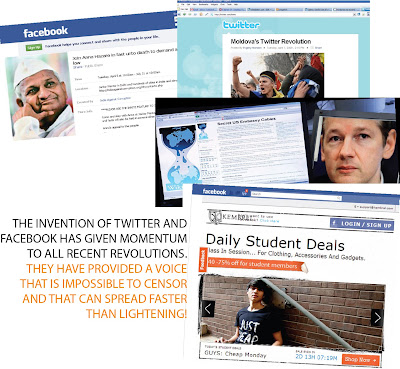IT’S ALL ABOUT CREATING THE RIGHT IMAGE
She is a heroine of a different generation and yet this month, so many celebrated her birthday as if she were still with us. She may have gone long ago; yet, she lives on, for her images just don’t seem to fade. In fact, every time an unseen or unpublished image of hers is discovered, it makes it to the front page of almost all newspapers. The lady is Marilyn Monroe. Images are very powerful, they just live on and some even become iconic. The face of the Cuban revolutionary, Che Guevera, also being one such image. It’s not just a face. It symbolizes rebellion and freedom, feelings that the youth just love. Put this face on any merchandise and it becomes a bestseller. The number of T-shirts emblazoned with Che’s face that have been sold is incredible. It’s ironic that a revolutionary, who rebelled against the capitalists, has today become the biggest bestseller of the capitalist world.
That’s the power of these images. They generate strong feelings. Another image that brings out strong reactions is the Swastika symbol of the Nazis. Recently, Madonna used it during her tour in Israel. On a giant screen was shown an image of Marine Le Pen, who is the leader of france’s National Front Party, with a Swastika on her forehead. The party was enraged and threatened to sue her. Considering the fact that Madonna would be performing in France soon, this was a nice gimmick to get the nation talking before she arrived! She is one of the few people who understand the power of images, of visual branding, and has used it consistently over the years to keep her in the news and always ahead of competitors. Be it the cross of Jesus or the Swastika of the Nazis, she knows how to use symbols to get people to notice her.
It’s also the oldest trick of brand building. It’s also the oldest trick of brand building. Brands have used symbols (logos) to distinguish themselves from competitors and build a unique identity around them. Associating oneself with a unique symbol makes it easy for consumers to remember you. So on Marilyn Monroe’s birthday, Lady Gaga tweeted a picture of hers dressed as Monroe, and more than one lakh of her followers (all in the age group of 14-19 years) liked it. The interesting part is neither Gaga or her fans belong to Monroe’s generation and the only reason they are her fans is because of the ‘images’ they see of her. These stunning images are the reasons for having ensured that ‘brand Marilyn Monroe’ will never die. And images re the reasons that will ensure that your brand lives on in the future.
PICTURES WILL RULE
The most exciting websites in the recent months have been ones that have focused on pictures. One such website, which has created a lot of excitement, is Pinterest. If numbers are a measure of growth and potential, then according to Experian Hitwise, Pinterest is the third most popular social network in the US, just behind Facebook and Twitter. Not surprising then that it was recently valued at $1.5 billion with Rakuten Ichiba giving it a funding of $100 million. Rakuten is the largest e-commerce site in Japan and among the world’s largest by sales. Why should an e-commerce site be interested in a scrap-booking site? Because it affects sales directly. Let’s see how.
Things have changed dramatically for interest. In February, no brand was interested in it and then in two months, the number of brand pages increased by 24%. Pinterest links have appeared in retailers’ e-mails faster than links to Facebook, Twitter et al appeared, proving the point that retailers are benefitting from it. A study by Vancouver’s Emily Carr University has found that there is a surprisingly high correlation between ‘pinning’ an image of a product and purchasing it, with more than 1 in 5 Pinterest users buying an item they have ‘pinned’ on their Pinterest boards. Companies are finding it important to keep a watch n who is ‘pinning’ what and where he is ‘pinning’ it. If a consumer pins a picture of your bike on his board titled ‘Bikes m considering to buy’, it makes sense to check which other bikes is he considering and get an idea. An aggressive marketer could even leave a comment on this consumer’s page giving him information about his brand. Similarly, there could be many ways to mine information and use it.
There is a shift in the way people are using the Internet. Earlier it as largely ‘text’ driven, but today pictures and images are becoming dominant. People are using pictures to communicate. Be it the image you upload on your Facebook profile or your BBM profile or even on your desktop, it’s become a way to communicate your feelings. No wonder that ‘smileys’ and ‘emoticons’ are used most frequently when e text friends and family, proving the point that communication in the future will be more image heavy rather than text. Marketers need to understand this change and plan their strategies accordingly in order to reach out to the maximum umber of consumers and make strategies that outwit their competitors. In future, marketers who can communicate with mages will be the most wanted, for in future, it’s an attractive image that will drive people to your website more than an interesting statement. This is the reason why it has been found that Pinterest is driving more traffic to the websites of rands as compared to Facebook or Twitter. From TV networks to magazines, interior designers to fashion designers to ar and bike manufacturers to even writers and bloggers; everyone is out there with their best images to attract consumers. A blogger who was writing an article on which advertising campaign he thought would win at the Cannes his year decided to use Pinterest and pin pictures and videos of the campaigns; for he found that he could attract more people to his post this way over just an article.
Images will decide the future of your business. No wonder that Mark Zuckerberg did not think twice before spending $1 billion in buying the iPhone application ‘Instagram’. It got people talking and wondering why he did it. The reason is clear now. Facebook launched its own camera application last month in May that lets people take ‘Instagram style’ pictures, which can be shared on Facebook with your mobile phones. If there is one feature that people are using the maximum on their mobile phones, it is the camera, and future revenues for companies will come from here only.
Facebook seems to be excelling in gobbling other people’s ideas and using them to its own benefit. Whatever the method, one fact is clear that it’s going to be a ‘business of images’ and the one with the best image (pun intended) would win.
FROM BRAND PERSONALITY TO CONSUMER PERSONALITY
The consumer of today is using pictures to express who he is. It’s a way of self-identification. Years ago in 1995, a French professor Jean-Nol Kapferer introduced the term ‘Identity Prism’, which took the corporate world by storm. Soon, every company stopped going by market research findings and framing their policies around those results. Rather, they started paying attention to their own inner values and focusing n them. So, from ‘market based’ branding, the game has now turned to ‘identity based’ branding. David Ogilvy mastered his and his advertisements focused on ‘brand building’ instead of just stating the various attributes of the brand. Now he brand felt more real, someone the consumer could identify with. So Harley Davidson bikes built a personality that appealed to the ‘rough and tough’ guys. Surf detergent built a personality, which appealed to the ‘sensible housewife’ who did not hesitate to spend more on good quality (remember the ‘Lalitaji advertisement’?).
Today, marketers are once again focusing on the right image and the right personality of the brand. Images create lasting impressions and are difficult to forget. If the image matches the personality of the consumer, then he will not hesitate to use that image on his age and on his profile, since he can identify with it and it helps him express his personality too. The consumer of today is also using pictures in many ways. Some are using them to remind themselves of things they want to buy. Some are even using Pinterest to make a visual resume of themselves. If you want your brand to be a part of his ‘visual’ list, it’s important that not only should your product be good, but it should also be represented in an interesting manner, so that he consumer likes the overall image that he sees.
‘Content is king’ is the mantra we have followed over the years. Today, the time has come to think beyond content and think in terms of images and even going to the extent of making sure that every piece of content is made into a shareable image wherever possible. A lot of marketers are converting their ‘texts’ into interesting ‘images’ so that they can be promoted on these ‘image sharing’ websites easily. Be it brand punchlines or quotations, the text is also available in an ‘image’ format.
Not just logos or pictures of their products, companies today are hiring professional designers and artists to ensure that their products are photographed in the right setting, which brings out the right image of the brand and which makes the images interesting enough for the consumer to identify with and ‘pin’ on his profile. With most of us running out of time and patience, the fastest way to judge people and pages and profiles is on the basis of the ‘profile picture’. If you want your brand to stand out, you must devote time to visual branding and create the right aura around your brand. After all, it’s all about creating the right image!


Comments
Post a Comment